i am having a day off and thanks to the bad weather no new data to process, so I decided to make a comparison of (the same) differently sampled luminance data of my latest project.
what do we look at?
https://www.astrobin.com/v2tmwo/
128x 200sec luminance (antlia)
esprit 120 at 840mm
touptek imx571 mono
well dithered
eq6r pro (tuned)
i processed the data in 4 different ways:
- bin1 native data --> 0.92"/pixel
- drizzle 2x 0.7 dropplet size -->
- drizzle 2x 0.7 dropplet size --> resampled to the original resolution using the pixinsight resample tool after using blurX
- bin2 data --> 1.85 "/pixel (resampling of the integrated bin1 image in pixinsight)
the pictures I am about to show are small screenshots of the different datasets and I am sure there are better ways to display my results but well, thats what I got and I would say the differences between them are still visible.
here is a short summary out of gpt o1, which got the task to look at the data and give a short summary of what it is seeing. Short Summary
You have four versions of the same dataset:
Native: This is your baseline, with original resolution. Balanced in detail and noise—no up- or downscaling.
Drizzle 2x: Potentially shows the finest details because it addresses undersampling. However, it tends to increase noise.
Bin2: Halves the resolution (combines 2×2 pixels), noticeably reducing noise but losing some fine structure.
Drizzle 2x, then resampled: Combines the higher detail recovery of Drizzle with reduced noise after scaling back down. Often a good compromise between detail and smoothness.
Overall, Drizzle 2x can yield the most detail but at the cost of higher noise, while Bin2 is the cleanest but sacrifices resolution. The resampled Drizzle version frequently strikes the best balance for many astrophotography needs.
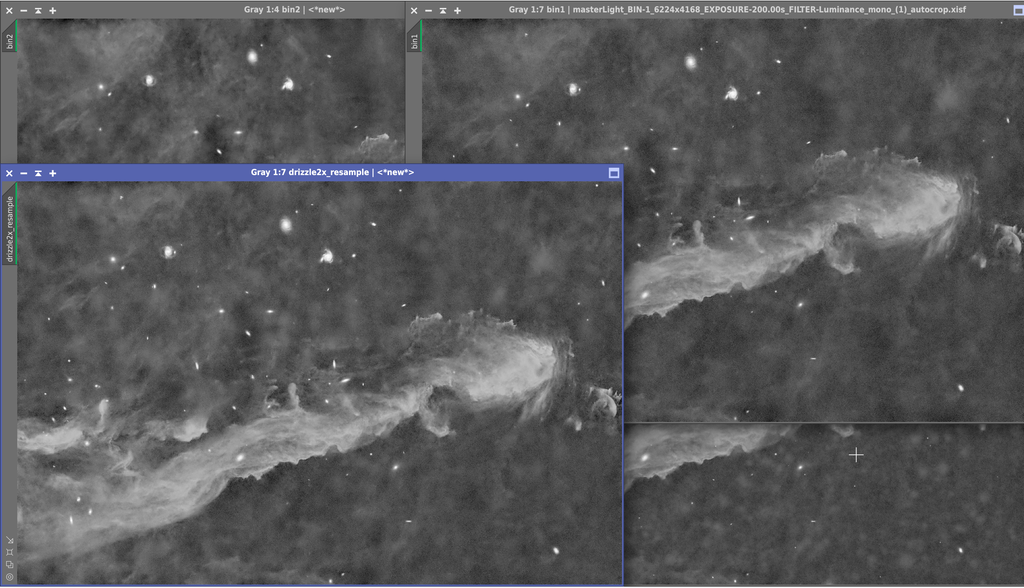
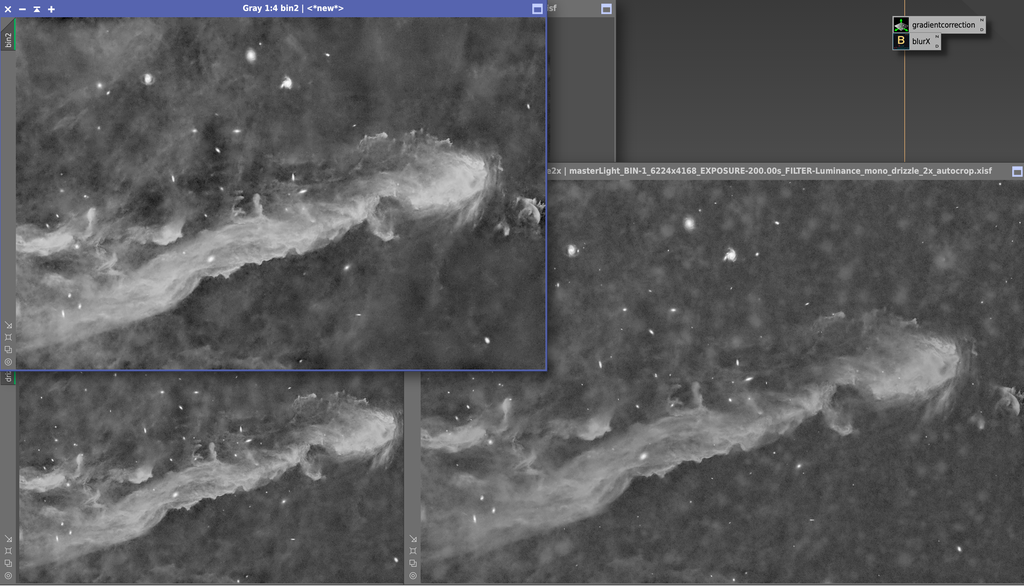
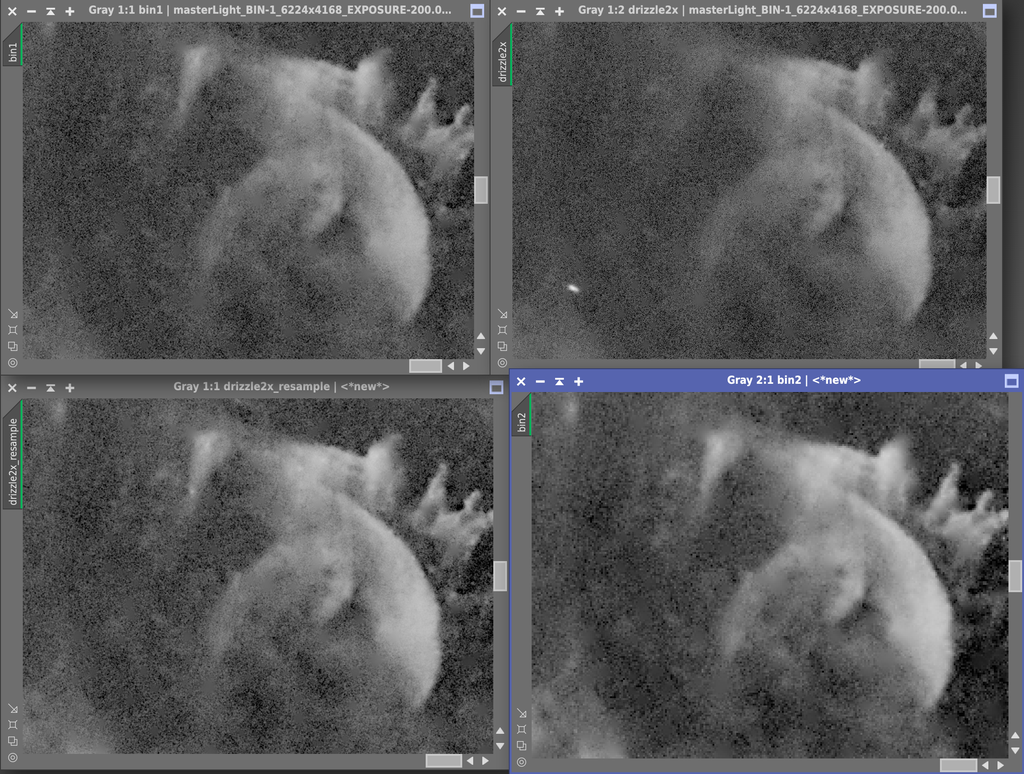
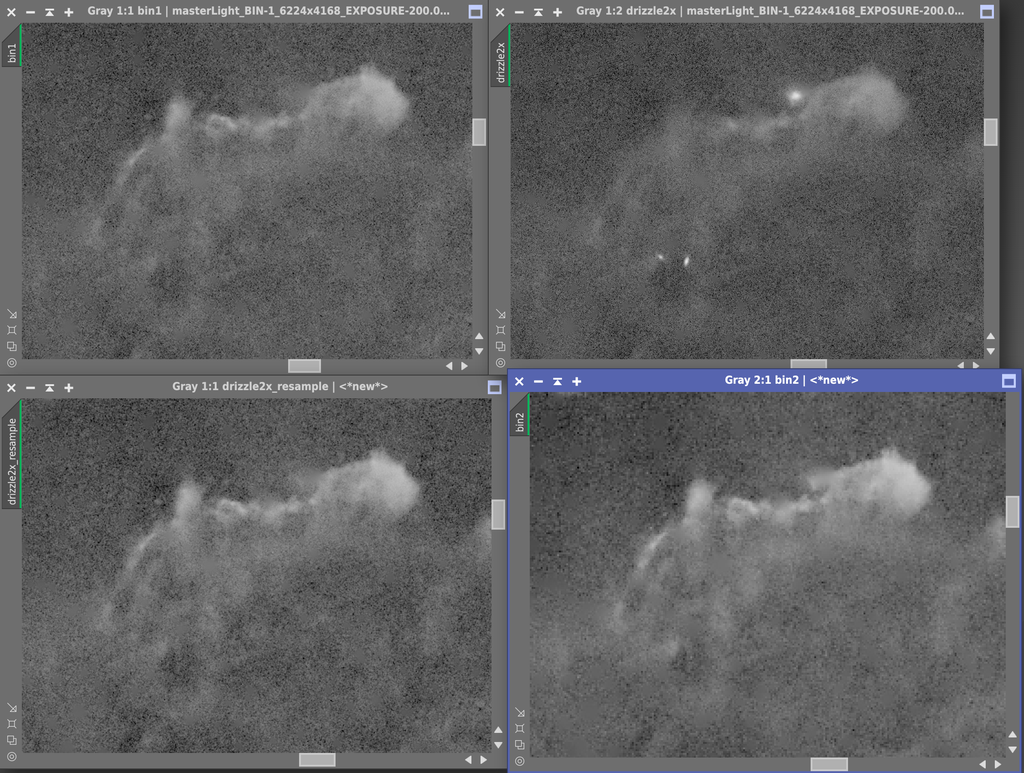
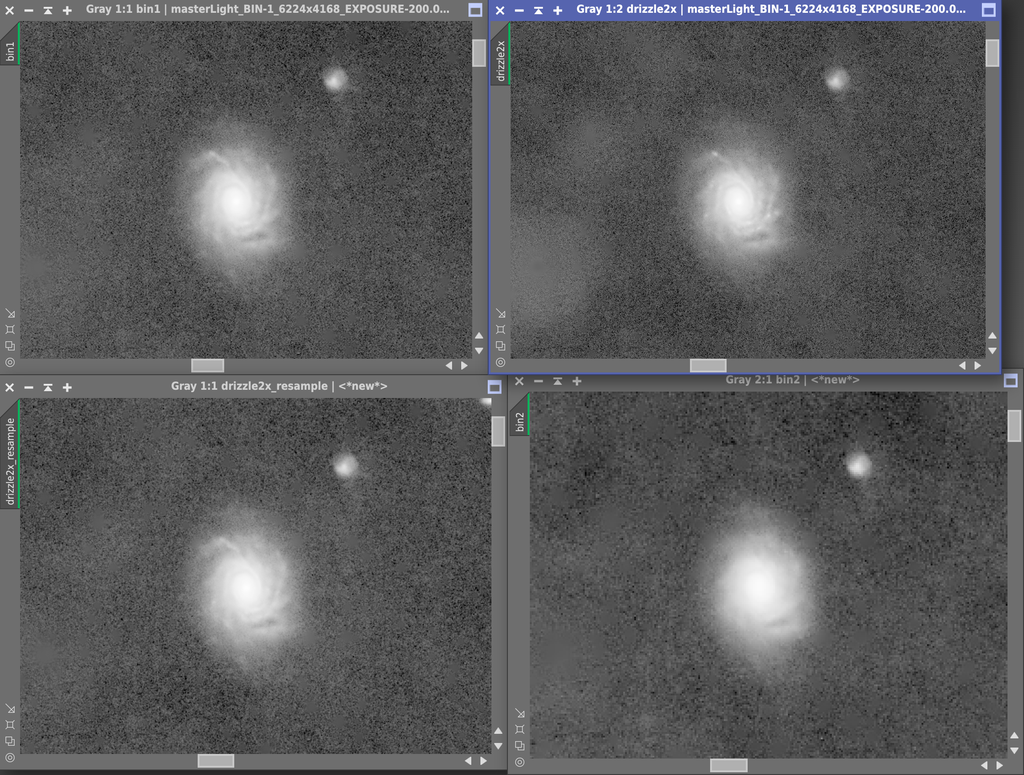
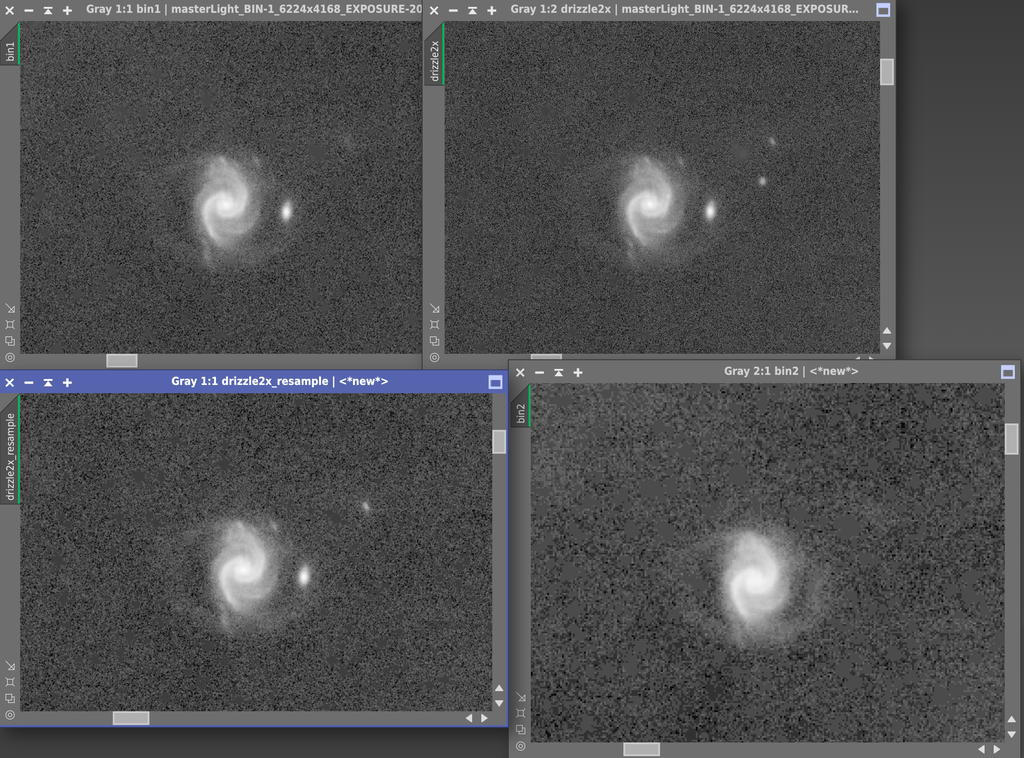
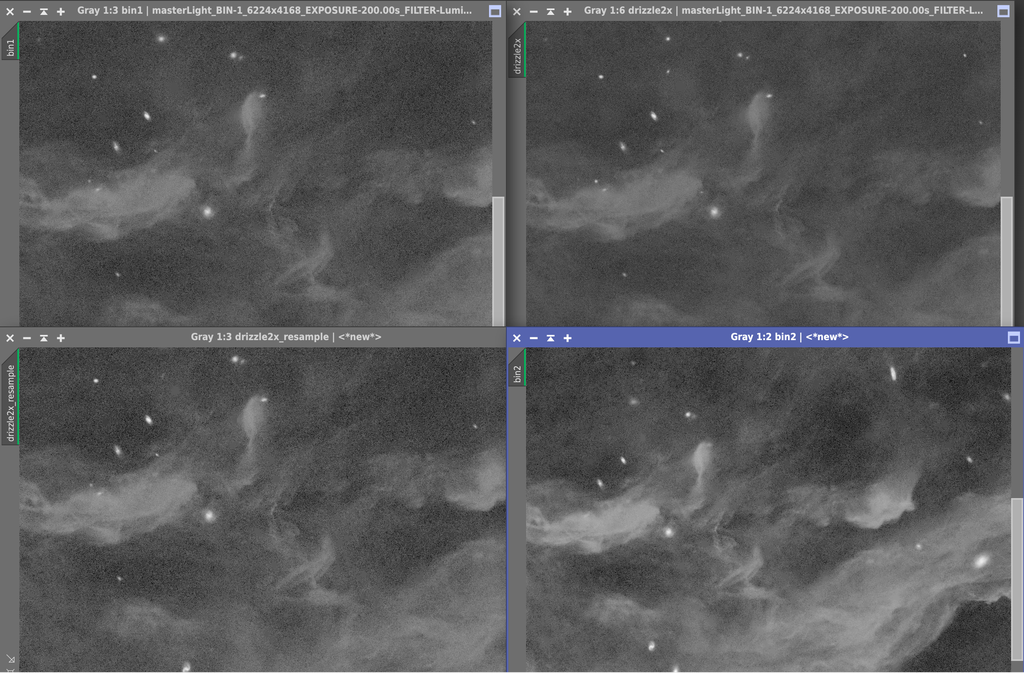
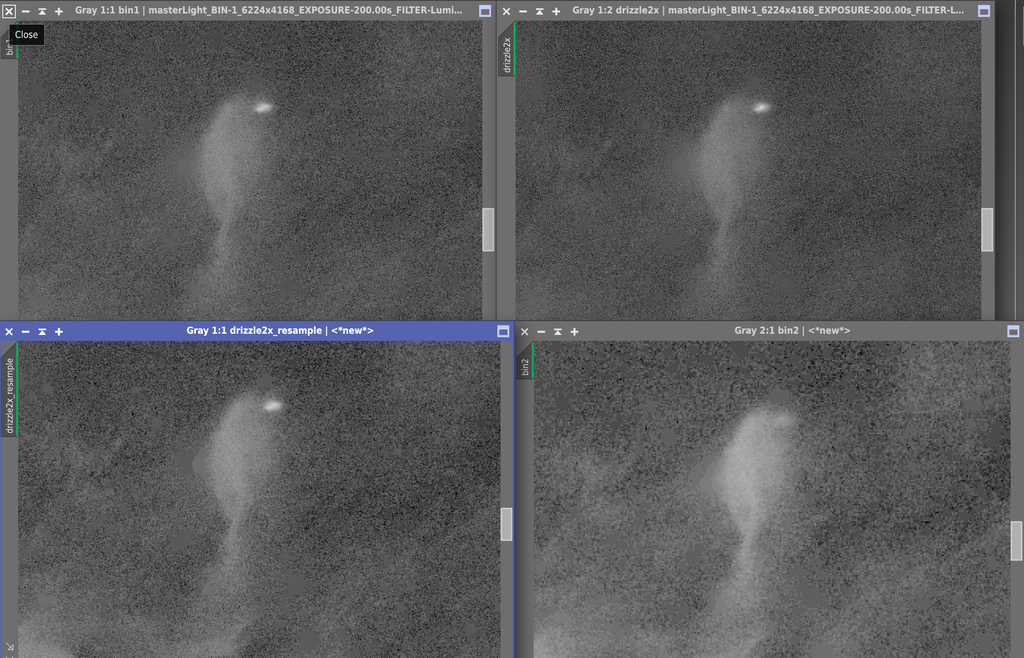
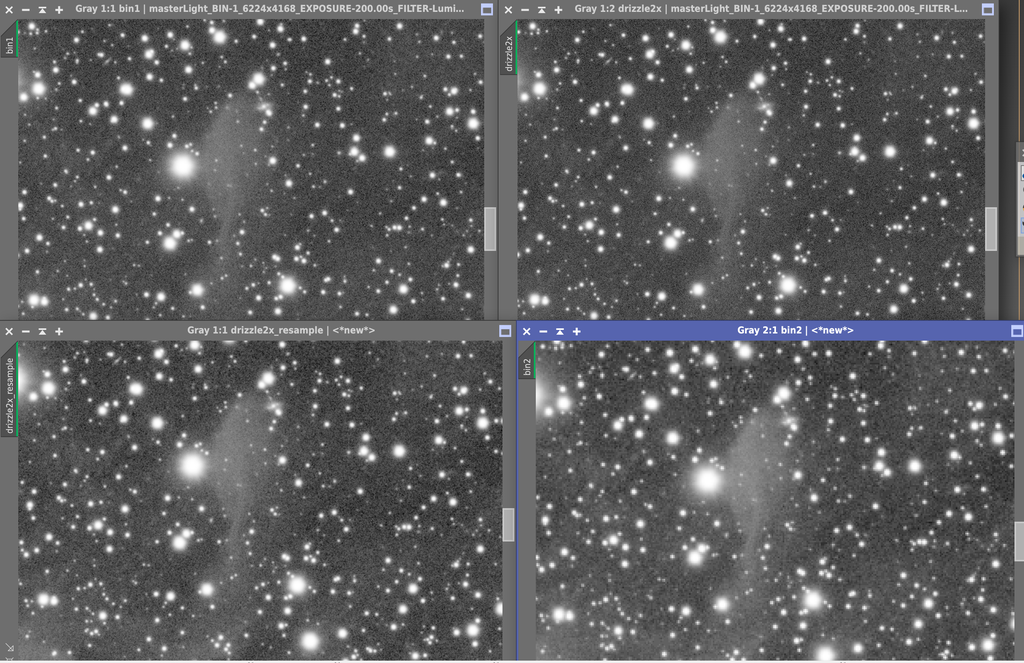
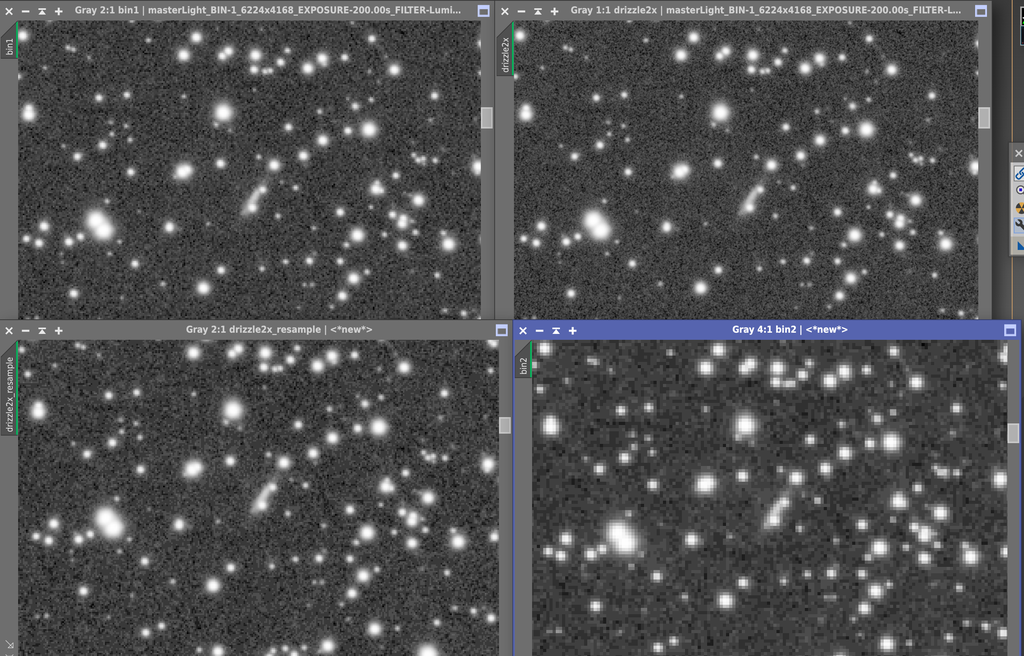
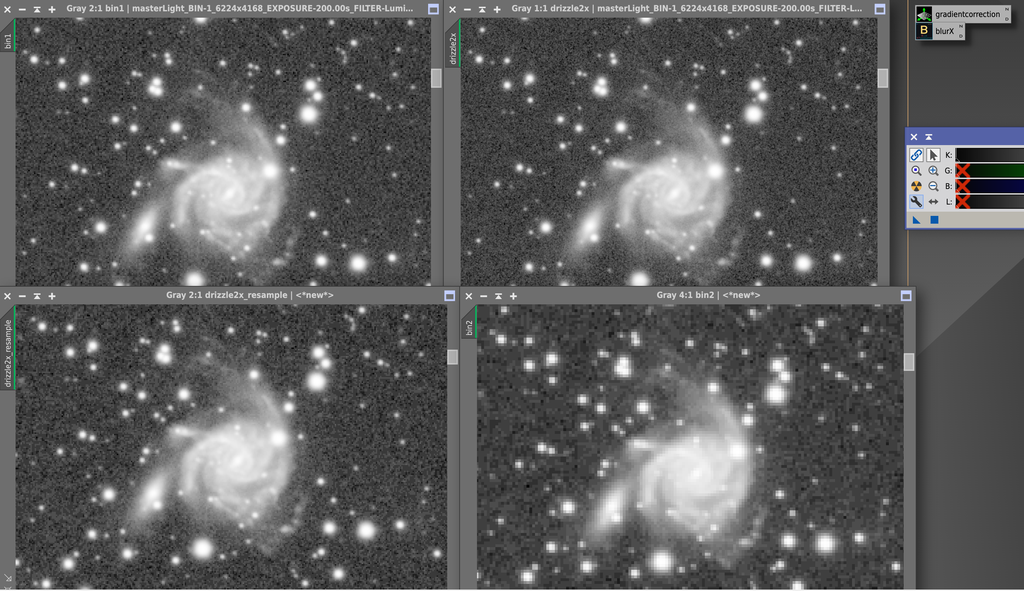
A few noteworthy points:
- Drizzle 2x The gain in detail using 2x drizzle is relatively small, but in my opinion, even at 0.92"/pixel, there’s still some benefit—especially when looking at the stars and the finer structures. I also find that the noise looks more pleasing both before and after using NoiseX.
- Bin2 vs. Drizzle Drizzle isn’t the only way to capture more detail. The Bin2 data shows a better and more detailed view of the nebula overall. While drizzle can bring out very fine details, Bin2 reveals significantly more structure in the larger areas. When comparing the full field in 2x-drizzled data versus Bin2 data, the drizzled image seems to lose a lot of the fainter nebula features and instead shows something more like altocumulus clouds.
- HDR approach While GPT suggests that a 2x downsampled drizzle image offers the best balance, I think it might be worth exploring some sort of HDR-style combination of both drizzle and Bin2 data.
Additional thoughts
Unfortunately, I don’t have another telescope or astro camera to compare different setups side by side. Still, I have a few questions:
- A 6-inch f/4 Newtonian with an APS-C sensor and an Esprit 120 with a full-frame sensor would produce roughly the same field of view.
- According to John Hayes’ comparison spreadsheet, an Esprit 120 + 6200mm setup (using Bin2) should theoretically capture almost twice the signal compared to a 6-inch f/4 Newtonian + ASI2600MM setup. But would that truly hold up in a direct comparison?
- In theory, an 8-inch f/4 Newtonian used with Bin2 could achieve the same SNR as an 8-inch RASA (using the same camera).
- few weeks ago bray falls uploaded a video showing his 3 rasa rig. looking at the things he captures (big area and low surface brightness) why not just use bin2 even if already under sampled? looking at my own data it does not look like one would give up much of those large area details using bin2.
Since combining Bin1 and Bin2 data should be straightforward—and could potentially yield the best of both worlds—why don’t more people process their images that way?
cs
anderl


